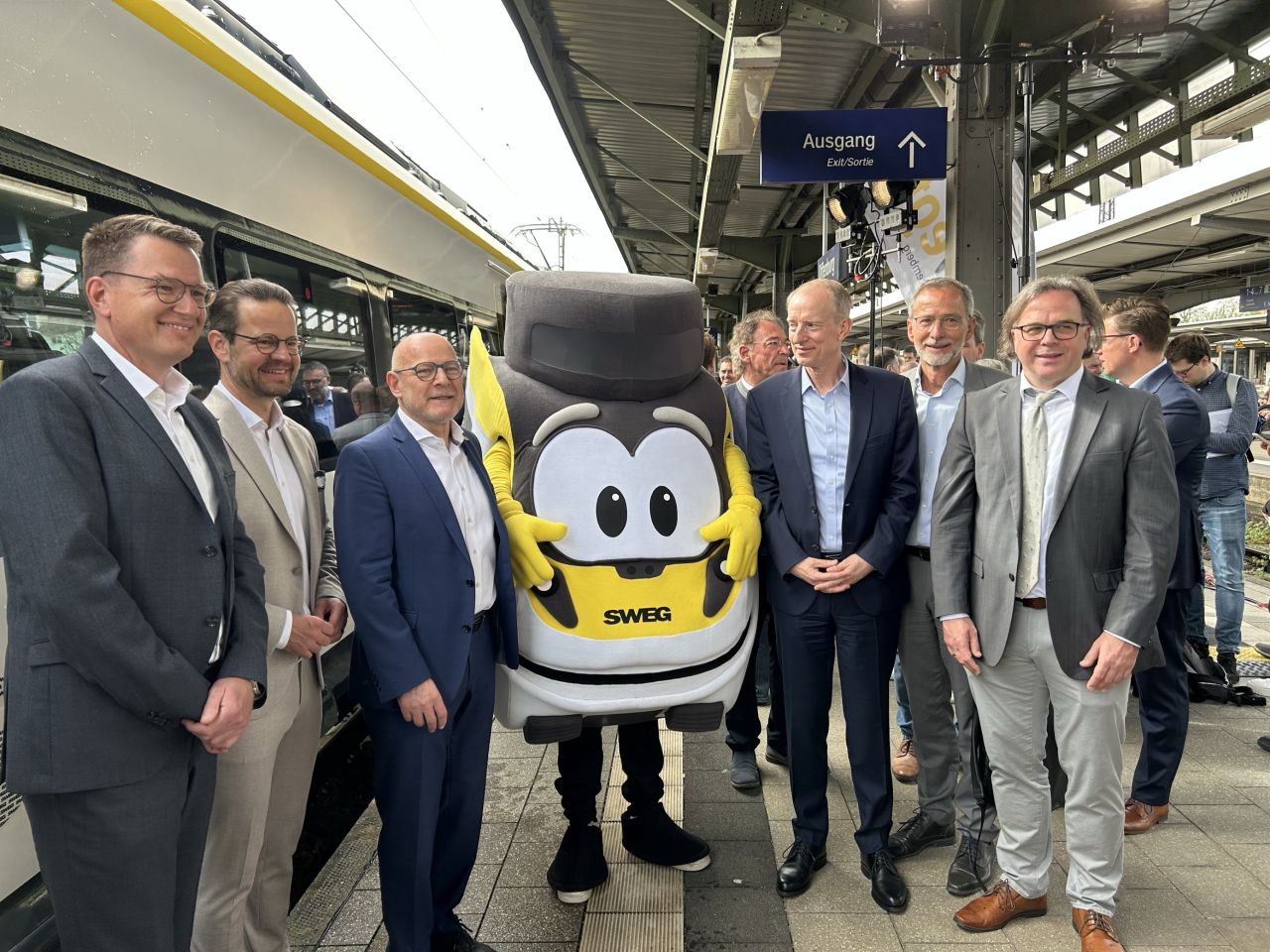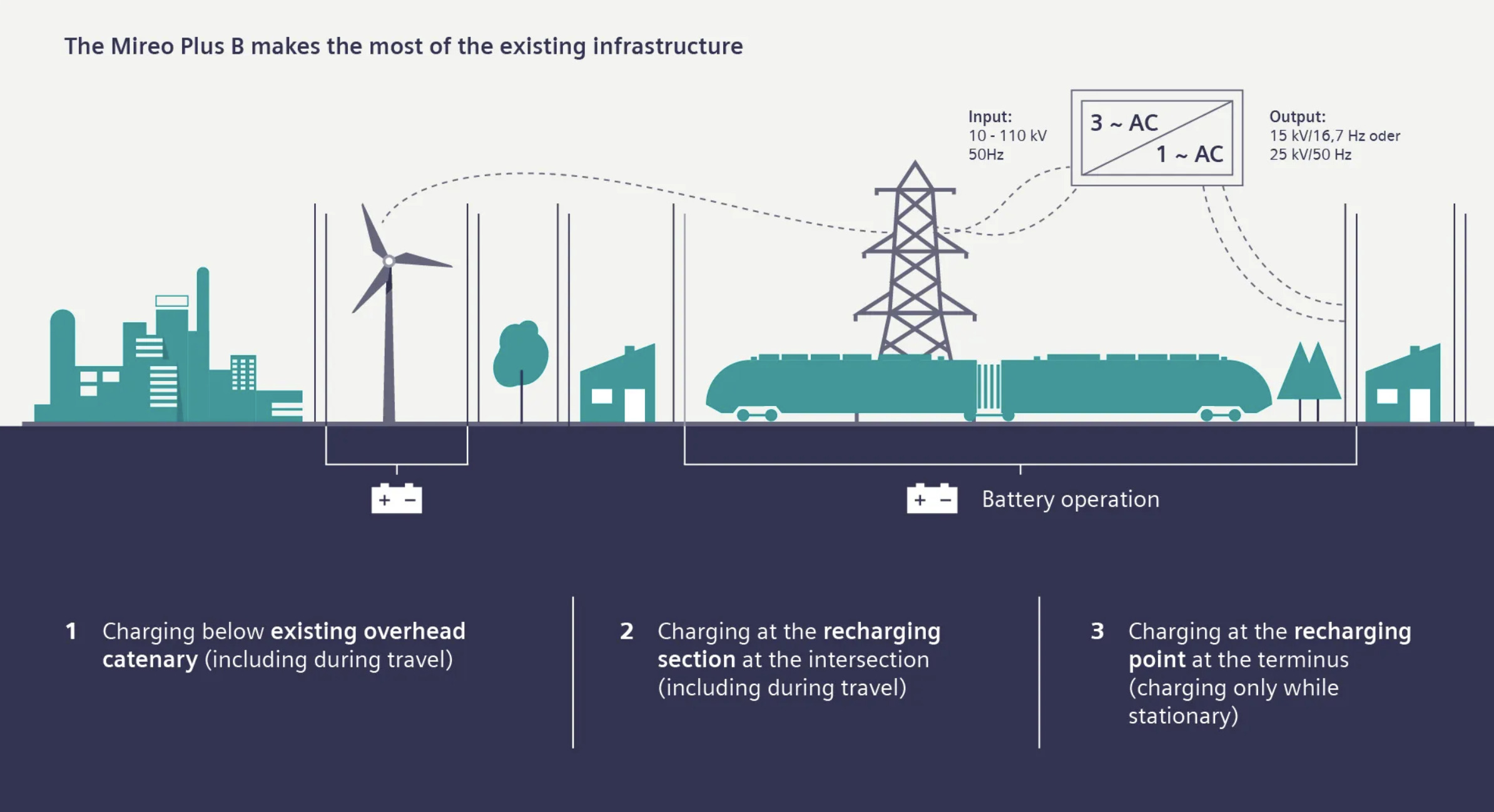Siemens Mobility Mireo Plus B hits the tracks in Baden-Wuerttemberg

In Germany, Baden-Wuerttemberg, launched the Siemens Mobility battery-hybrid train, Mireo Plus B this week. The adoption of the Mireo Plus B fleet is expected to result in substantial environmental benefits, potentially saving up to 1.8 million litres of diesel annually.
Landesanstalt Schienenfahrzeuge Baden-Württemberg (SFBW) has ordered 27 Mireo Plus B trains from Siemens Mobility for Network 8 of the Ortenau regional system. The contract also includes maintenance of the trains by Siemens Mobility for just under 30 years. Baden-Wuerttemberg stands out as the first region in Germany to implement battery-hybrid trains, demonstrating a commitment to innovation and environmental responsibility in its transportation infrastructure.
After analysing various options in late 2022, Baden-Württemberg’s transport ministry opted against hydrogen trains, favouring battery-electric vehicles for their cost-effectiveness. Following assessments of 16 non-electrified route sections, battery hybrid trains emerged as the preferred choice in most cases. Hydrogen fuel cell trains were excluded, mainly due to operational and economic considerations. Six subnetworks were identified, with battery trains recommended for half and full electrification for the rest.

The Mireo Plus B
These trains feature advanced battery technology that enables seamless operation on both electrified and non-electrified rail tracks, replacing traditional diesel trains. The Mireo Plus B trains are notable for their zero-emission operation, quiet performance, and versatility in various rail network settings. Operators now benefit from a high-performance, energy-efficient vehicle with improved mileage and range, thanks to the incorporation of Silicon Carbide (SiC) technology.
The Mireo platform has a high-performance traction system that enables the Mireo Plus B to reach a maximum speed of 160 kilometres per hour, both in battery mode and under a contact line. When charging the long-lasting battery, Mireo Plus B is also designed to take full advantage of the existing infrastructure.

Paired with an appealing design, the construction of the train’s interior fosters a spacious atmosphere while prioritising comfort and safety. Enhancements such as onboard Internet, passenger information systems, and safety monitoring (Closed-Circuit Television) further contribute to passenger satisfaction. The cantilevered seating design facilitates easy and cost-effective cleaning of the passenger compartment. All entrances are equipped with sliding steps.
Further reading:
- Siemens Mobility delivers first batch of Mireo trains to ÖBB
- RailTech Europe ’24: Towards sustainable tendering for the railways
- Siemens Mobility launches Smart Train leasing service
- RailTech Europe ’24: Developing sustainable tendering for rail
- Siemens Mobility presents Mireo, their most energy-efficient regional train




